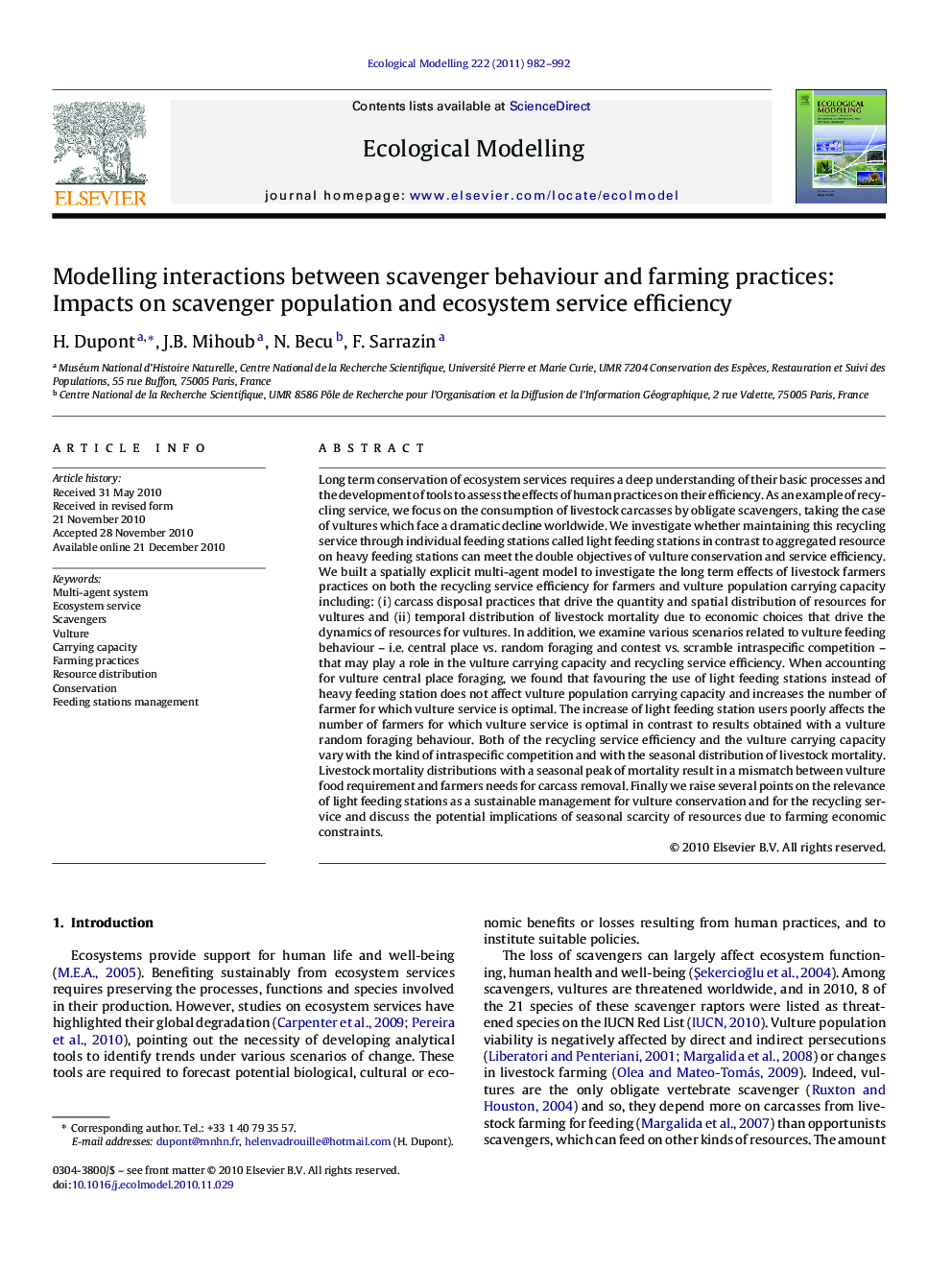| کد مقاله | کد نشریه | سال انتشار | مقاله انگلیسی | نسخه تمام متن |
|---|---|---|---|---|
| 4377065 | 1303406 | 2011 | 11 صفحه PDF | دانلود رایگان |

Long term conservation of ecosystem services requires a deep understanding of their basic processes and the development of tools to assess the effects of human practices on their efficiency. As an example of recycling service, we focus on the consumption of livestock carcasses by obligate scavengers, taking the case of vultures which face a dramatic decline worldwide. We investigate whether maintaining this recycling service through individual feeding stations called light feeding stations in contrast to aggregated resource on heavy feeding stations can meet the double objectives of vulture conservation and service efficiency. We built a spatially explicit multi-agent model to investigate the long term effects of livestock farmers practices on both the recycling service efficiency for farmers and vulture population carrying capacity including: (i) carcass disposal practices that drive the quantity and spatial distribution of resources for vultures and (ii) temporal distribution of livestock mortality due to economic choices that drive the dynamics of resources for vultures. In addition, we examine various scenarios related to vulture feeding behaviour – i.e. central place vs. random foraging and contest vs. scramble intraspecific competition – that may play a role in the vulture carrying capacity and recycling service efficiency. When accounting for vulture central place foraging, we found that favouring the use of light feeding stations instead of heavy feeding station does not affect vulture population carrying capacity and increases the number of farmer for which vulture service is optimal. The increase of light feeding station users poorly affects the number of farmers for which vulture service is optimal in contrast to results obtained with a vulture random foraging behaviour. Both of the recycling service efficiency and the vulture carrying capacity vary with the kind of intraspecific competition and with the seasonal distribution of livestock mortality. Livestock mortality distributions with a seasonal peak of mortality result in a mismatch between vulture food requirement and farmers needs for carcass removal. Finally we raise several points on the relevance of light feeding stations as a sustainable management for vulture conservation and for the recycling service and discuss the potential implications of seasonal scarcity of resources due to farming economic constraints.
Journal: Ecological Modelling - Volume 222, Issue 4, 24 February 2011, Pages 982–992